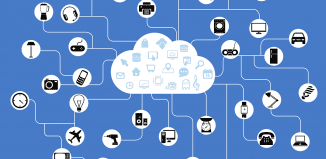How Can Technology Reduce Crime?
This post is also available in:  עברית (Hebrew)
עברית (Hebrew)
London, Bristol and Milton Keynes are only some of the breakthrough cities in the “Smart City” revolution, already applying annitiatives such a a city-wide WiFi connection and smart-parking. A smart city is a city that takes cares of improving resident service by becoming more efficient, through using advanced technologies, improving management of public services, motivating city development and improving residents’ lives with connectivity and relevant services. With the Internet of Things being widely adopted in cities, it shouldn’t take long before see more smart initiatives implemented throughout the modern world, providing countless services meant to improve life in the city. However, we must be careful not to confuse two different concepts – “smart city” and “safe city”.
So what is a safe city? Safe city projects focus on improving citizens’ safety. An example is the projects operated by Thales in Mexico City. By gethering information and merging communications, CCTV systems, public payphones and more, Thales has managed to aid reduce crime by 22% in just three years, and has returned one car out of every two stolen to its owners.
What is smart city, then? An example to the services offered by a smart city are improved public transportation and smart infrastructures. For example, the city of Santander in Spain has installed 12,500 sensors in the downtown in order to measure anything, from the amount of grabage piling up in trashcans to the number of parking spaces available. It even put sensors on taxi cabs, to monitor polution levels and traffic.
But is safe necessarily protected? Hackers and even terrorists can see the smart city systems as an appealing target due to the new attack possibilites it creates. The threats of that are quite substantial and we must learn to trust the services provided to use by the safe smart city, just as banks have earned our trust with the security measures they are taking, which takes meticulous attention in all security aspects of the services provided in these cities, including securing physcial infrastructure and providing cyber security.
In any case, it’s important to understand the expected security challenges in implementing smart and safe city initiatives. There is, of course, no system which is impenetrable, but it’s important to reach a security level that is reasonable in the residents’ eyes.
Israel is not left behind in this field, and examples for that are the “Red Color” application, providing alerts from rocket launches, as well as Moovit, an application reporting the location of public transportation in the city in real-time. Let’s hope that with the success of these applications, public bodies will adopt this open and available information concept and get the best and brightest developers and Hi-Tec companies to keep coming with smart solutions to improve the lives of the citizens of Israel.





























